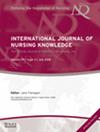The quality of nursing diagnoses, interventions, and outcomes in Romanian nursing documentation measured with the Q-DIO: A cross-sectional study
Abstract
Purpose
To assess the quality of the nursing process in Romania by evaluating nursing documentations with the quality of diagnoses, interventions and outcomes (Q-DIO) measurement instrument.
Methods
A quantitative cross-sectional research design was employed using probabilistic sampling to select nursing documentations from a Romanian university hospital. The data were analyzed using the Q-DIO measurement instrument.
Findings
Low quality levels of nursing process documentation were found. The Q-DIO subscale “Nursing diagnoses as process” (assessment) revealed a mean = 1.36 (SD 0.52) of maximum 2. Nurses collected lots of data but did not use these to state nursing diagnoses. “Nursing diagnoses as product” showed inaccurate diagnoses; mean = 1.24 (SD 0.48) of maximum 4. Nursing interventions were planned and documented, but their impact on the etiology of nursing diagnoses was low; mean = 0.76 (SD 0.18). The quality of nursing outcomes mean was 0.57 (SD 0.29).
Nurses failed making connections between nursing assessment, diagnoses, interventions, and outcomes, and standardized nursing languages (SNLs) were not used. Statistically significant differences were found among all Q-DIO sub-concepts except for “Nursing diagnoses as process.”
Conclusions
The documentation was structured but did not support the nursing process and its documentation, and SNLs were not implemented. There was an underutilization of data to state nursing diagnoses, and nursing interventions were mostly ineffective, leading to low nursing outcomes.
Implications for nursing practice
This study provides new insights on the nursing process and its documentation in Romania and a baseline for future research. Policymakers, administrators, and educators should consider educating nurses to use standardized nursing languages and apply the Advanced Nursing Process.

 求助内容:
求助内容: 应助结果提醒方式:
应助结果提醒方式:


